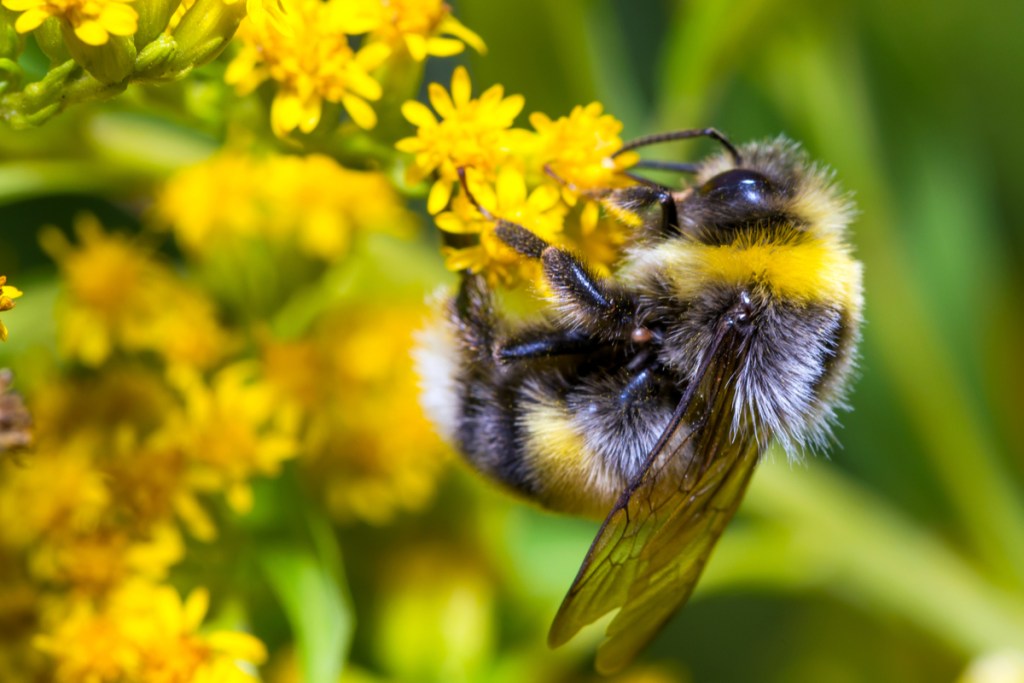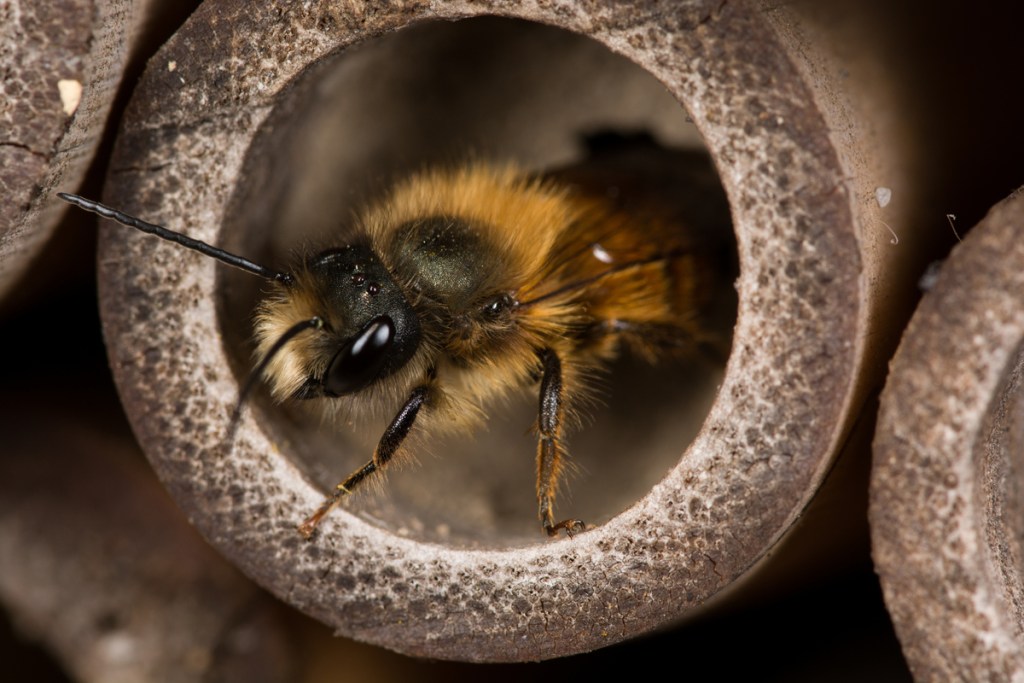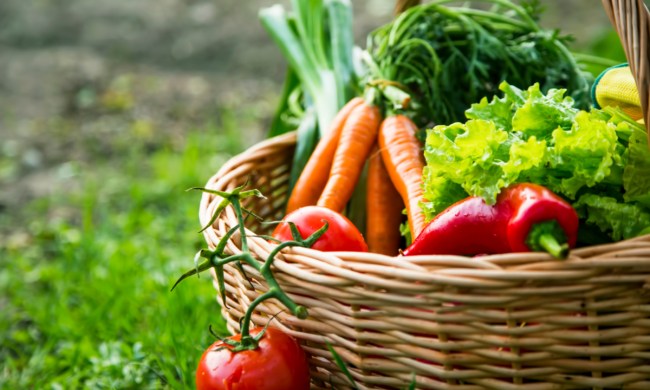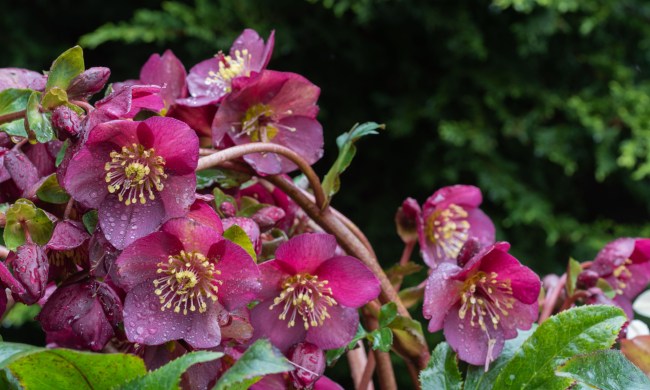National Don’t Step on a Bee Day is July 10th (right around the corner!) and that means it’s time to talk about all the good things bees can do for your garden. Although many seem intimidating, they’re actually a crucial part to the pollination process. Their presence is something to be encouraged—so long as they’re the right kinds of bees. So, what are some good bees for gardens, and how can you attract them?

Bumblebees
We all know bumblebees are one of the cutest insects around, but would you believe they’re actually a huge benefit to your crops, too? From native wildflowers to crops like tomatoes and peppers, bumblebees are able to pollinate a wide range of plants in your garden. They’re common in most parts of North America, emerging from their underground nest in the spring after a long winter.
Due to the fact that they don’t have a menacing appearance, bumblebees are perhaps one of the least likely bees to get stepped on. But for this Don’t Step on a Bee Day, why not make a conscious effort to let some coexist with you in your garden? We don’t mean a nest, but just giving them the space to do their job as they flitter from flower to flower. Bumblebees buzz (also known as sonicating), which is an important behavior for pollination of some flowers, like those on a tomato plant.
One of the big threats to bumblebees is the use of pesticides and loss of resources. By minimizing pesticide use and planting flowers they can feed/gather pollen from, you’ll not only get to enjoy the fruits of their labor but will also be helping the local population stay afloat.
Blueberry bees
Blueberry bees are similar in appearance to bumblebees and are a solitary species. They’re native to southern parts of the United States, and as their name suggests are important pollinators for blueberry crops. They’re most active from February to April, emerging just before blueberry plants begin to flower. They use their buzzing ability to shake the heavy pollen from the blueberry flowers loose, transferring it to other flowers in their search for more nectar.
If you grow blueberries and are hoping to attract this master pollinator to your crop, you can try planting some spring flowers nearby or in the same plot! Blueberry bees also enjoy sipping on the nectar of azaleas, clovers, eastern redbuds, viburnums, and trumpet flowers.

Mason bees
North America has roughly 140 species of mason bees, most of which are often mistaken as honey bees. A majority of them have a similar black and yellow striping, though some species sport a blue-black coloring. Unlike honey bees, mason bees are solitary creatures. These bees come with great pollination skills (with some species specializing in the pollination of specific crops, like the blue orchard mason bee focusing on fruit trees).
Most mason bees are actually native to North America, so it’s quite likely you’ve had some buzzing around your garden without realizing it. They emerge when the temperatures reach an average 55 degrees, and you can even encourage mason bees to visit your flowers by setting up a nesting area for them. Because they’re tunnel nesters, you can easily provide them with a bee house made of wood, thick paper straws, or hollow reeds, along with some bee food and a nearby source of mud and pollen-rich flowers that blossom in the spring. The house should be sturdy and mounted on the side of a building, fence, or tree that faces warm morning sun.
Squash bees
Like mason bees, squash bees have a similar appearance to honey bees and are solitary nesters. They’re masters at pollinating squash, pumpkins, and gourds, making them a great friend to have around if you’re growing any of these crops. They’re active in the early hours of the morning, so you have to get up bright and early to see them hard at work. The males can often be spotted darting from flower to flower searching for a mate while the females forage the flowers for pollen and nectar.
By midday, these bees are fast asleep in the wilted flowers, so take care if you choose to remove spent parts of the plant. In celebration of Don’t Step on a Bee Day, you may want to get up early to tend to the garden alongside them. Avoid using pesticides as much as possible, as doing so could kill them. (The ideal time to use the pesticide, if needed, is in the evening when the bees aren’t active.) If you want to be as friendly to these bees as they are to you, you should also avoid tilling the area around your squash and gourds. Often they make their nests under or near the plants they pollinate.
Having flowers and parts of your yard that are left to grow naturally will help encourage bee populations, too! Of course, wasps are never ideal, but bumblebees, blueberry bees, mason bees, and squash bees (along with honey bees and many others!) can be great for gardens. Before you go getting out the bee spray, do some research if there’s a species you don’t recognize. You may have a garden buddy on your hands.


